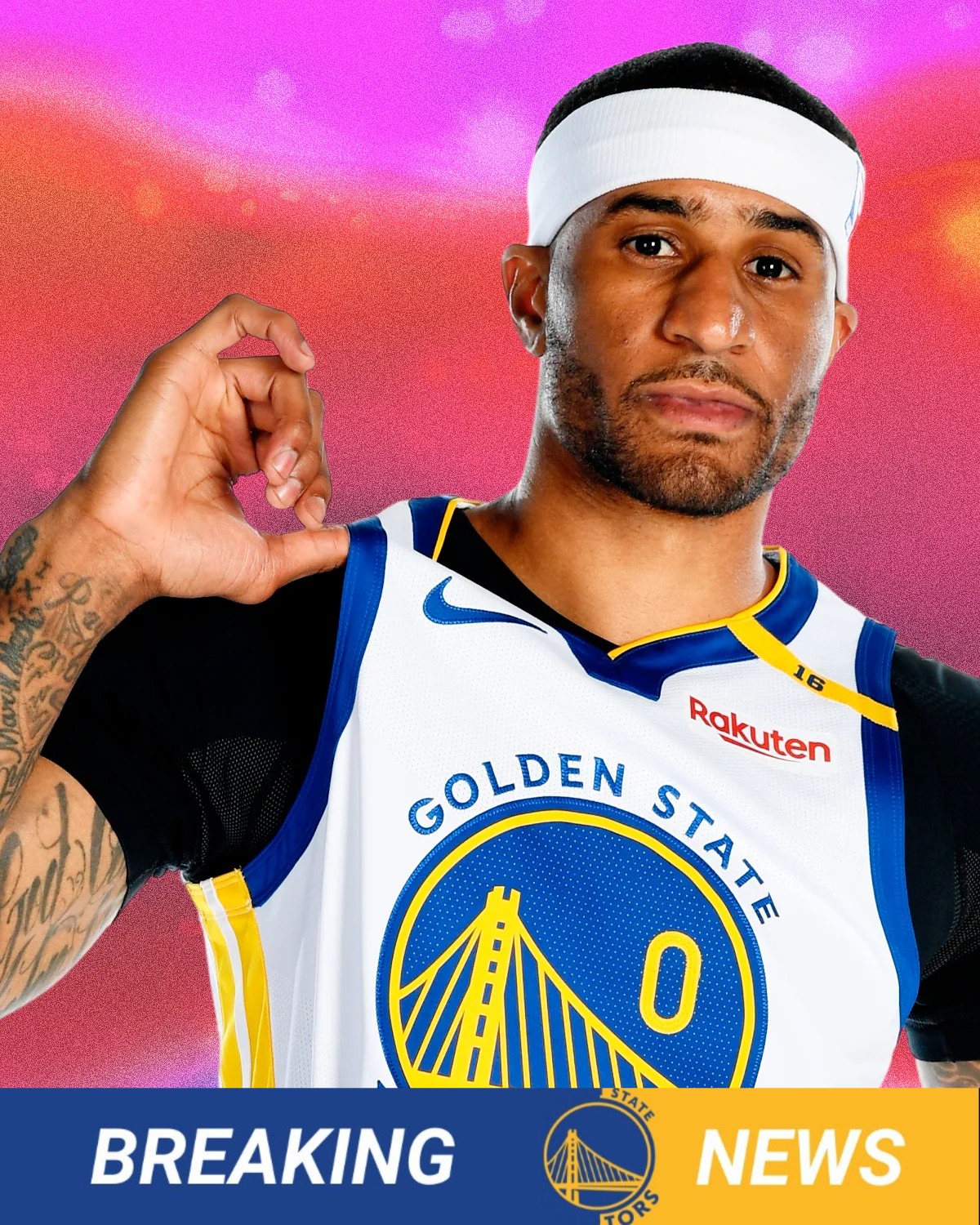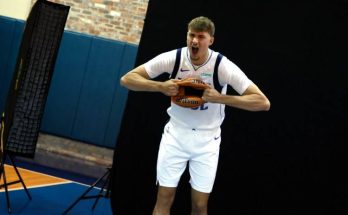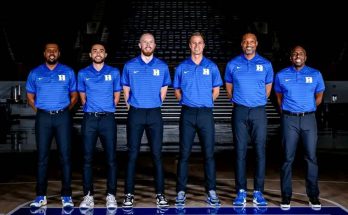The Golden State Warriors are at a crossroads. As they navigate the ever-changing landscape of the NBA, their decision to prioritize offense over defense has become increasingly apparent, especially in the wake of the departure of defensive specialist Gary Payton II. This shift reflects a deeper strategic recalibration that speaks not only to the evolving nature of the Warriors’ roster but also to the broader trends influencing the league today. Understanding the implications of this transition requires a closer look at Golden State’s past, their current roster construction, and the challenges and opportunities they face moving forward.
Gary Payton II’s exit from the Warriors is more than just a personnel change; it’s a significant pivot in identity. Known for his tenacity on the defensive end, Payton embodied the grit and hustle that had become a hallmark of Golden State’s championship DNA in recent years. He was often the unsung hero—someone who could guard multiple positions with intensity, disrupt opponents’ rhythm, and provide the Warriors with a reliable defensive backbone. His ability to switch seamlessly on pick-and-rolls, contest shots without fouling, and generate fast-break opportunities made him invaluable in a lineup that often featured high-scoring stars like Stephen Curry, Klay Thompson, and Draymond Green.
Yet, despite his defensive prowess, the Warriors have made the conscious decision to move forward without Payton II. This move signals an intentional shift toward a more offense-centric approach. At first glance, this might seem counterintuitive for a team that has long emphasized the importance of defense, particularly under the coaching philosophy of Steve Kerr, who has always stressed balance. However, the modern NBA is rapidly evolving. The league is becoming increasingly offense-driven, with pace, spacing, and shooting becoming the currency of success. Teams that can outscore their opponents with efficient ball movement and lethal shooting often find more consistent success than those that rely solely on defensive stops.
For Golden State, choosing offense over defense in this context is about maximizing their strengths and adapting to their current roster. The Warriors still boast an elite offensive core centered around Curry and Thompson, two of the greatest shooters in NBA history. Their ability to stretch defenses and create scoring opportunities for themselves and their teammates remains unparalleled. Additionally, the Warriors have invested in younger, offensively gifted players who thrive in a free-flowing system that prioritizes pace and space. By doubling down on this offensive identity, Golden State hopes to exploit mismatches, create open looks, and maintain their trademark rapid-fire scoring that can overwhelm even the most disciplined defensive teams.
This offensive emphasis, however, does come with risks. The departure of Payton II leaves a noticeable hole on the defensive end. His ability to guard elite perimeter players and his high basketball IQ allowed the Warriors to mitigate some of the defensive liabilities of their more offense-minded stars. Without a player like him, Golden State must find other ways to shore up their defense or accept a lower defensive efficiency as a trade-off for enhanced offensive firepower. This trade-off is not without precedent, but it requires a delicate balance. If the Warriors become too one-dimensional, they risk being outmatched by teams with more robust defensive schemes, particularly in the playoffs where defense often becomes paramount.
To address these concerns, Golden State is betting on a few key factors. First, they rely heavily on Draymond Green, arguably the best defensive playmaker in the league. Green’s ability to communicate, rotate, and disrupt offensive sets is invaluable, and his presence helps compensate for the loss of a defensive specialist like Payton II. Green’s defensive versatility allows the Warriors to switch on many screens and keep their defensive integrity intact. His leadership and experience are also critical for a team in transition, guiding younger players and keeping the unit cohesive on that end of the floor.
Second, the Warriors are looking to develop defensive skills within their younger core. Players like Jonathan Kuminga, Moses Moody, and even some of their wing players are being tasked with improving their defensive fundamentals. While these players may not yet have the defensive acumen of Payton II, Golden State’s coaching staff is focusing on teaching principles of team defense, positioning, and effort to help minimize the impact of his absence. The hope is that a collective defensive mindset can partially offset the loss of an individual defensive stopper.
Third, Golden State is increasingly leaning into their offensive system to create transition opportunities, which can serve as a form of defense in its own right. The faster the Warriors push the pace and score in transition, the less time their opponents have to set up quality offensive possessions. This philosophy can disrupt opposing teams’ flow and force turnovers or rushed decisions. While this approach does not replace the need for solid half-court defense, it complements it by using offense as a weapon to limit opponents’ scoring chances.
The decision to prioritize offense also aligns with the Warriors’ broader organizational goals. The franchise has always been committed to playing an exciting brand of basketball that not only wins but entertains. The splashy three-point shooting and high-paced offense attract fans and media attention, driving revenue and brand value. By leaning into their offensive identity, Golden State maintains a competitive advantage in the marketability of their product. It also allows them to appeal to a generation of players and coaches who are increasingly focused on analytics-driven, offense-heavy strategies.
Moreover, the Warriors’ front office is actively exploring roster moves that could further bolster their offensive capabilities. Whether through trades, free agency, or the draft, the team is on the lookout for versatile scorers who can complement their stars and maintain the offensive momentum. The loss of Payton II frees up cap space and roster flexibility, potentially allowing Golden State to acquire players who fit this offensive mold better than defensive specialists. This approach is not without challenges, as finding players who can also contribute adequately on defense remains important, but it demonstrates the Warriors’ willingness to adapt.
At the same time, the NBA landscape is changing rapidly. Many successful teams are finding innovative ways to combine elite offense with improved defense. The Warriors’ move away from a defensive specialist like Payton II may not necessarily mean they are abandoning defense entirely, but rather that they are recalibrating how they approach it. In some ways, it reflects a broader trend where teams seek to balance analytics, player skill sets, and coaching philosophies to optimize performance on both ends of the court. Golden State’s embrace of offense over defense is a strategic gamble that could pay dividends if executed well.
There is also the psychological and cultural aspect to consider. Payton II’s departure might impact the team’s identity and chemistry. His defensive grit embodied a certain toughness and energy that rubbed off on teammates and set a tone. Without that presence, the Warriors must find other ways to cultivate a winning culture that emphasizes resilience and effort. The leadership of veterans like Curry, Thompson, and Green becomes even more critical in maintaining team cohesion and motivation.
In summary, the Golden State Warriors’ choice to emphasize offense over defense following Gary Payton II’s exit reflects a complex strategic evolution. It is a move driven by roster realities, league-wide trends, and an embrace of their core strengths. While it introduces risks on the defensive end, the Warriors are banking on their elite offensive talent, coaching adjustments, and leadership to navigate these challenges. The success of this approach will depend on how well Golden State balances pace and space with defensive discipline, how quickly their younger players can develop defensively, and whether they can continue to execute at a high level in critical moments. Ultimately, the Warriors are redefining their identity in a league that prizes offense, and their journey will be a fascinating one to watch in the seasons ahead.



